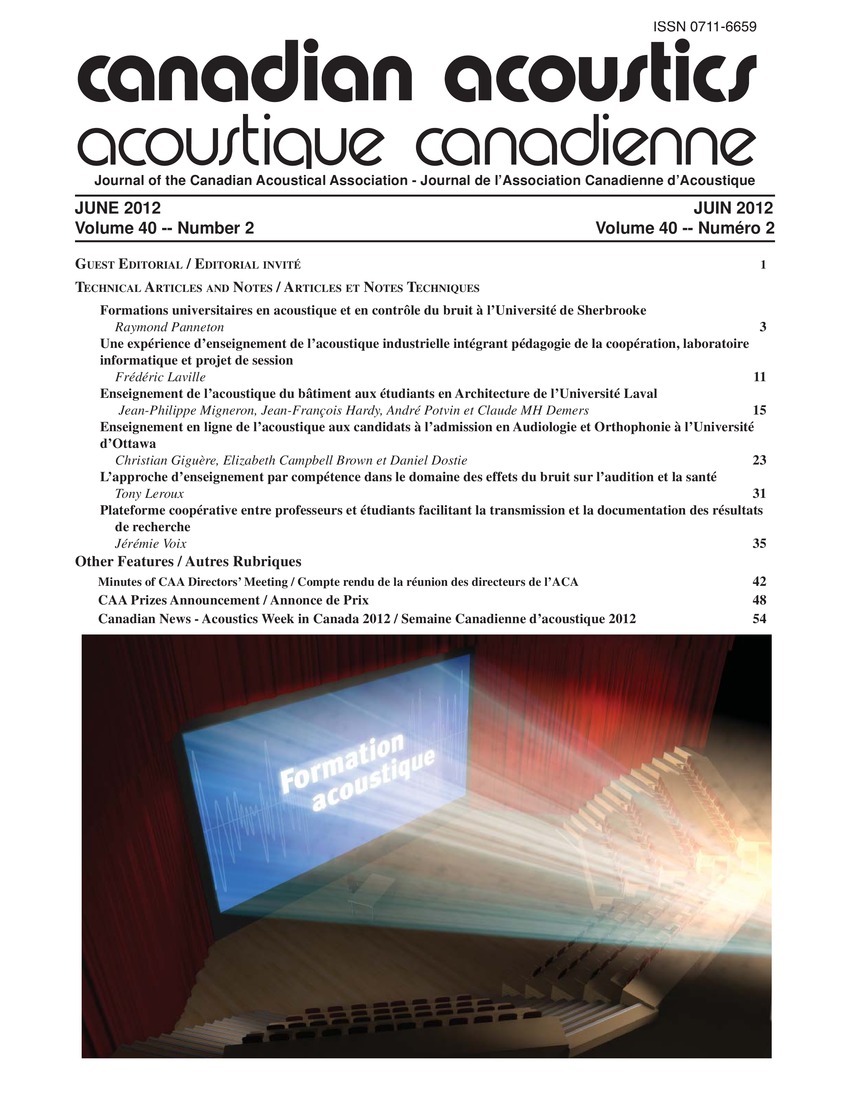Online teaching of acoustics to candidates for admission in audiology and speech-language pathology at the University of Ottawa
Keywords:
Linguistics, Basic concepts, Clinical skills, Graduate program, Instrumental techniques, Online course, Online environments, Online teaching, Physical acoustics, Speech-language pathology, Teaching and learning, University of OttawaAbstract
This paper aims to share the experiences gained by migrating a preparatory course in acoustics for candidates applying to the graduate program in audiology or speech-language pathology at the University of Ottawa to an online environment. The course is offered in the summer for those who have no prior training in physical acoustics, acoustic phonetics or instrumental techniques in linguistics. Knowledge of the basic concepts in acoustics, signal analysis and electroacoustic systems is necessary for mastering several clinical skills for both audiologists and speech-language pathologists. Delivering the course online became necessary to allow more students to meet the admission prerequisite in acoustics given the wide geographical distribution of newly admitted students in audiology and speech-language pathology across the country. Since 2009, the course has been offered completely online using distance education tools (e.g. Blackboard™) and the development of acoustics teaching and learning materials in French targeting the area of audiology and speech-language pathology. While significant efforts were required to implement the online course over a five-year period, the project has proven to be a great success.Additional Files
Published
How to Cite
Issue
Section
License
Author Licensing Addendum
This Licensing Addendum ("Addendum") is entered into between the undersigned Author(s) and Canadian Acoustics journal published by the Canadian Acoustical Association (hereinafter referred to as the "Publisher"). The Author(s) and the Publisher agree as follows:
-
Retained Rights: The Author(s) retain(s) the following rights:
- The right to reproduce, distribute, and publicly display the Work on the Author's personal website or the website of the Author's institution.
- The right to use the Work in the Author's teaching activities and presentations.
- The right to include the Work in a compilation for the Author's personal use, not for sale.
-
Grant of License: The Author(s) grant(s) to the Publisher a worldwide exclusive license to publish, reproduce, distribute, and display the Work in Canadian Acoustics and any other formats and media deemed appropriate by the Publisher.
-
Attribution: The Publisher agrees to include proper attribution to the Author(s) in all publications and reproductions of the Work.
-
No Conflict: This Addendum is intended to be in harmony with, and not in conflict with, the terms and conditions of the original agreement entered into between the Author(s) and the Publisher.
-
Copyright Clause: Copyright on articles is held by the Author(s). The corresponding Author has the right to grant on behalf of all Authors and does grant on behalf of all Authors, a worldwide exclusive license to the Publisher and its licensees in perpetuity, in all forms, formats, and media (whether known now or created in the future), including but not limited to the rights to publish, reproduce, distribute, display, store, translate, create adaptations, reprints, include within collections, and create summaries, extracts, and/or abstracts of the Contribution.


